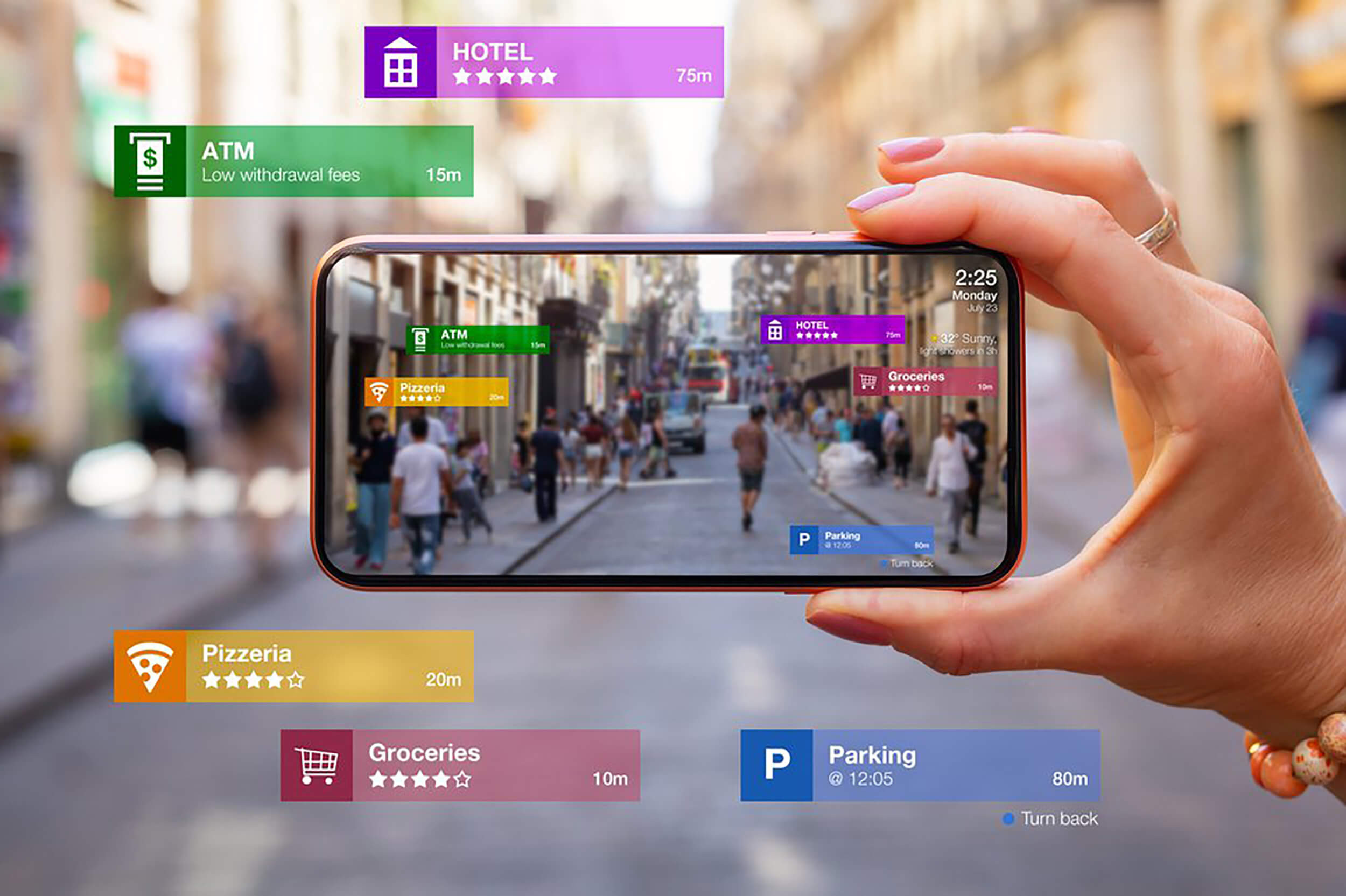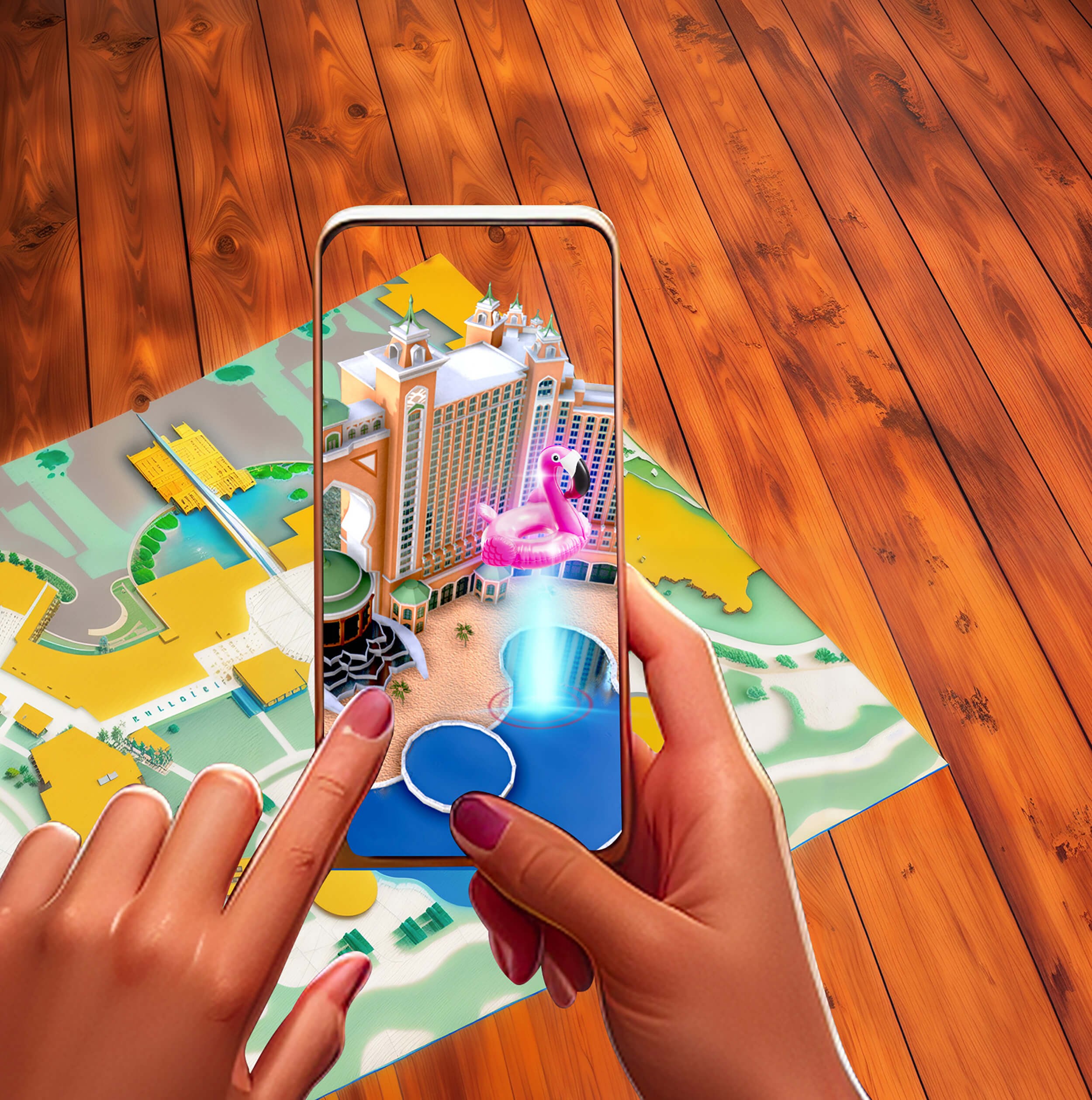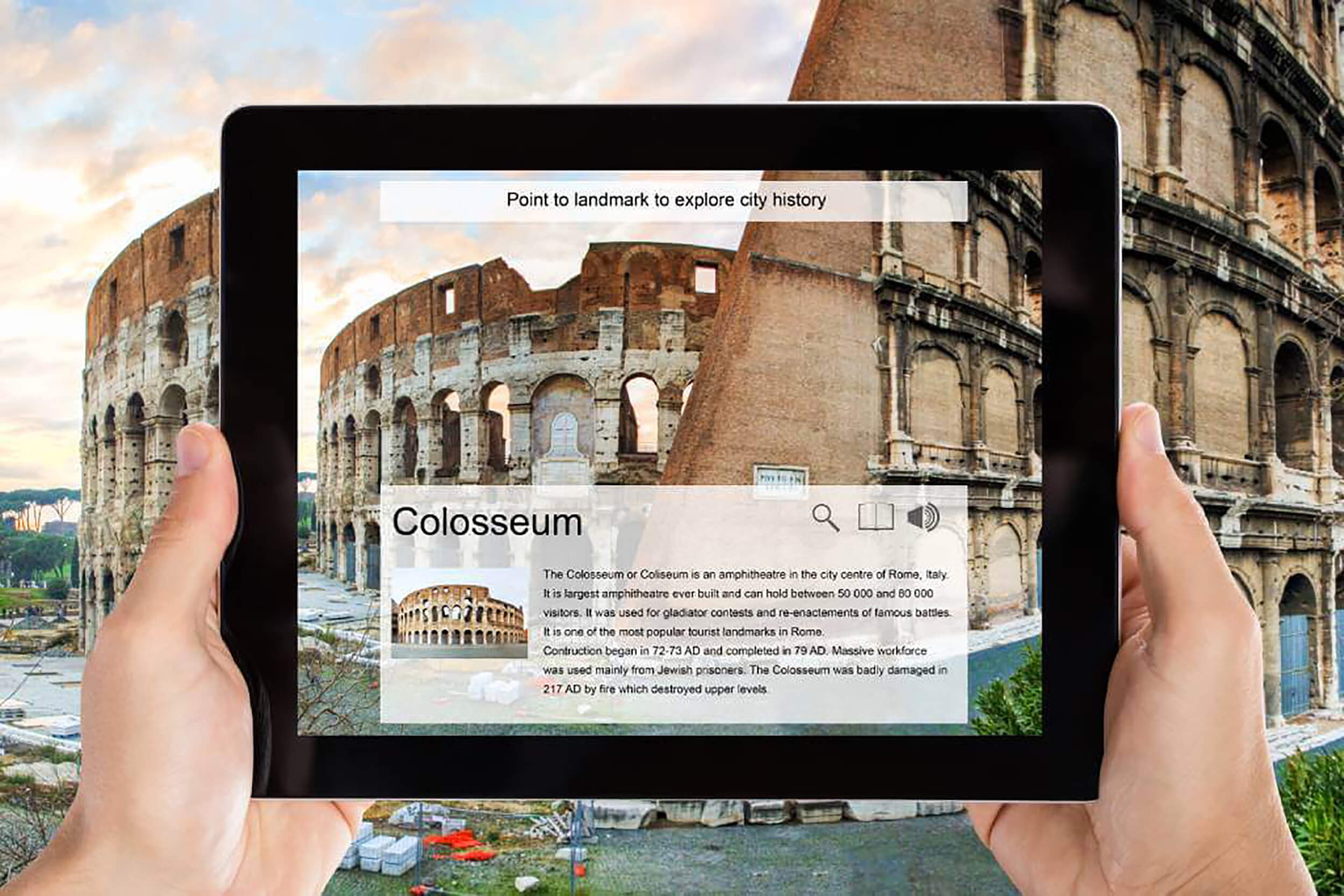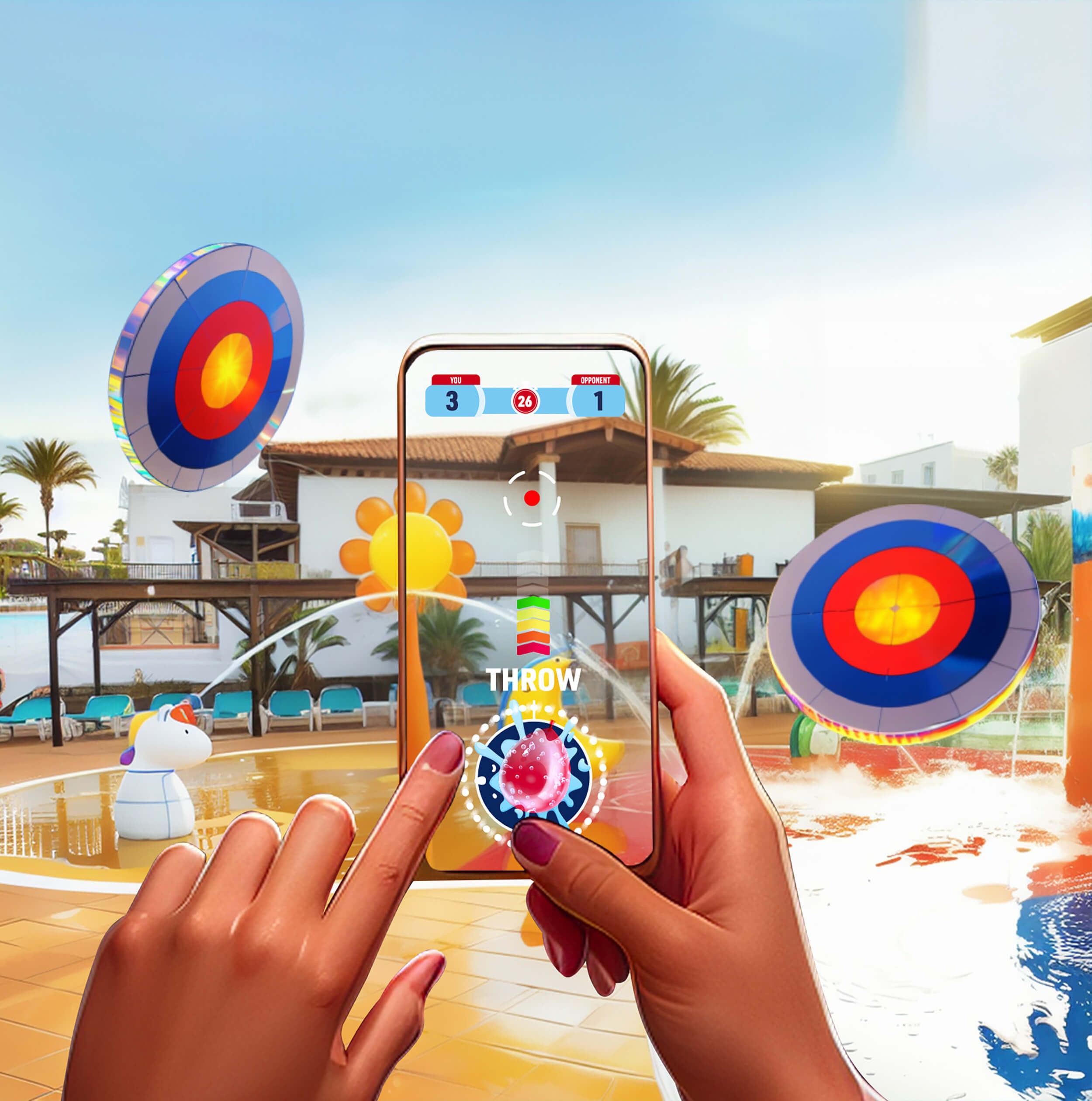Augmented reality (AR) is revolutionizing tourism and travel, offering immersive experiences in destinations like vibrant Vietnam, and SIXT.VN is ready to help you explore these opportunities. By seamlessly blending the physical and digital worlds, AR enhances travel with interactive maps, personalized recommendations, and real-time information. This tech-driven approach not only boosts customer satisfaction but also creates new revenue streams and innovative marketing strategies for travel businesses, ensuring unforgettable journeys. Explore Vietnam with SIXT.VN and discover the seamless blend of technology and travel, enhancing every moment with smart travel solutions, virtual tours, and interactive travel experiences.
1. What is Augmented Reality and Why is It Important in Tourism?
Augmented reality (AR) enhances the real world by overlaying digital information onto it, transforming the way tourists experience destinations. AR is important in tourism because it provides interactive and immersive experiences, personalized travel solutions, and real-time information, enhancing customer satisfaction and engagement.
AR combines the physical and digital worlds, providing interactive experiences and information right on your smartphone or tablet. For travelers in Vietnam, this means accessing detailed historical facts at ancient sites, viewing 3D models of landmarks, or even trying out local cuisine virtually before ordering, all through your device’s camera. This blend of convenience and information enriches the travel experience, making it more engaging and educational. As the Vietnam National Administration of Tourism emphasizes, integrating technology like AR is crucial for modernizing the tourism sector and attracting tech-savvy travelers.
The integration of AR in tourism isn’t just a novelty; it’s a strategic move for travel businesses. According to research by GlobalData, the AR market in tourism is projected to grow significantly, highlighting its potential to drive revenue and improve customer loyalty. For SIXT.VN, this means offering cutting-edge services like AR-enhanced tours of Hanoi, providing customers with a unique and memorable way to explore the city.
2. How Does Augmented Reality Enhance Travel Experiences?
AR enhances travel experiences by offering virtual tours, interactive navigation, and engaging entertainment, making travel more informative and enjoyable.
2.1. Virtual Exploration of Destinations
AR travel guides allow tourists to virtually explore destinations, providing immersive previews of landmarks, museums, and natural wonders from anywhere in the world. According to a Market Data Forecast report, the virtual tourism market is rapidly growing, indicating a strong demand for AR-enhanced virtual experiences. For example, apps like “Antarctic Heritage Trust AR” transport users to Antarctica, offering 360º images and videos, enhancing travel experiences.
 Antarctic Heritage Trust AR app
Antarctic Heritage Trust AR app
2.2. Interactive Navigation
AR applications provide real-time directions and information, making it easier for tourists to navigate unfamiliar places. Travelers can point their smartphones to the streets and receive superimposed directions, guiding them to nearby ATMs, restaurants, and attractions. For instance, the “World Around Me” app highlights essential points of interest, offering interactive travel experiences.
2.3. Engaging Entertainment
AR adds a new dimension to guest experiences at museums, art galleries, and historical sites. AR apps offer real-time information about paintings, artifacts, and other exhibits. “Museum Buddy” provides self-guided tours, object narrations, and museum maps, making cultural experiences more engaging and informative. Furthermore, AR travel gaming apps like “Geocaching” engage visitors in virtual treasure hunts, taking exploration to a new level.
3. What are the Key Benefits of Augmented Reality in Tourism?
The key benefits of AR in tourism include enhanced accessibility, improved buyer confidence, and enriched educational opportunities.
3.1. Enhanced Accessibility
AR technology allows individuals with limited mobility or disabilities to virtually explore destinations, overcoming physical barriers and offering virtual travel experiences. According to research from the World Tourism Organization (UNWTO), accessible tourism is a growing segment, and AR can play a crucial role in providing inclusive travel experiences.
3.2. Improved Buyer Confidence
By virtually experiencing a destination, travelers can make more informed decisions, ensuring they choose the right option and reducing the risk of dissatisfaction. Enhanced decision-making leads to more confident bookings and better travel experiences.
3.3. Enriched Educational Opportunities
AR provides interactive and informative experiences, educating travelers about the history, culture, and natural wonders of a destination. AR enriches learning experiences, making travel more meaningful and memorable. For instance, apps that restore historical scenes and events provide users with an engaging and educational experience.
4. How Can Augmented Reality Improve Customer Satisfaction in Travel and Tourism?
AR improves customer satisfaction by offering personalized travel experiences and enhancing communication and collaboration.
4.1. Personalized Travel Experiences
AR allows travel companies to tailor every aspect of a customer’s journey, ensuring they enjoy activities and itineraries that suit their preferences. Customization enhances travel experiences, making them more relevant and enjoyable. According to Forbes, customers are more likely to stay loyal to brands that provide personalized experiences.
 Personalized travel experiences through AR
Personalized travel experiences through AR
4.2. Enhanced Communication and Collaboration
AR enables customers to leave real-time reviews and ratings, providing valuable feedback for travel and hospitality businesses. Implementing AR avatars or virtual representatives can guide customers through their travel experiences, enhancing support. Improved communication leads to better customer service and satisfaction.
5. How Can Augmented Reality Increase Revenue in Travel and Tourism?
AR increases revenue through enhanced virtual tours, virtual shopping experiences, augmented advertising, and gamification, creating new revenue streams for travel and tourism businesses.
5.1. Enhanced Virtual Tours
AR-enhanced tours allow users to explore destinations virtually, interact with virtual elements in real time, and generate revenue through ticket sales and partnerships with local businesses. Enhanced virtual tours provide immersive experiences and drive revenue through various channels.
5.2. Virtual Shopping Experiences
AR transforms traditional souvenir shopping by allowing tourists to virtually try on clothing, accessories, and test products before purchase. According to a Deloitte report, AR-enabled shopping experiences drive consumer engagement and increase sales. Travel companies can partner with local retailers to offer exclusive discounts and promotions for AR shoppers.
 Virtual shopping experiences with AR
Virtual shopping experiences with AR
5.3. Augmented Advertising
AR-enabled devices create interactive advertisements that blend seamlessly with real-world environments, extending brand reach and engagement. Creative design and animation in AR advertising can be highly impactful, driving consumer interest.
5.4. Gamification in Travel and Tourism
AR applications with game-like features engage users in interactive challenges, quests, and rewards as they explore destinations. Gamification enhances travel experiences, making them more engaging and educational. Travel and tourism companies can offer premium game experiences, extra features, or in-game purchases, generating additional revenue.
6. How Can Augmented Reality Be Leveraged in the Hospitality Industry?
AR can be leveraged in the hospitality industry to improve guest services, train hotel staff, and enhance hotel experiences.
6.1. AR in Hotels
Hotels can use AR to offer virtual 360º tours to prospective visitors, helping them decide on room sizes, explore amenities, and evaluate event spaces. AR can also be integrated with social media platforms to create interactive content. Virtual tours enhance the booking process, providing customers with a realistic preview of the hotel and its facilities.
6.2. Training Hotel Staff
AR can enable employees to learn in a hands-on manner, visualizing complex processes, simulating real-life scenarios, and receiving real-time feedback. Enhanced training improves employee performance and customer service.
6.3. Improving Guest Services
AR provides virtual concierge services, allowing guests to access information, make bookings, and request assistance by scanning their surroundings. Whether it’s making a dinner reservation or getting directions, guests can access everything in the palm of their hand.
 Improving guest services with AR in hotels
Improving guest services with AR in hotels
7. How Can SIXT.VN Help You Experience the Benefits of Augmented Reality in Vietnam?
SIXT.VN offers a range of services that leverage augmented reality to enhance your travel experience in Vietnam, including virtual tours, interactive navigation, and personalized recommendations. With SIXT.VN, you can explore Hanoi and other destinations in Vietnam in a whole new way.
7.1. Virtual Tours of Hanoi
SIXT.VN provides AR-enhanced virtual tours of Hanoi’s most iconic landmarks, allowing you to explore the city from the comfort of your home or hotel room. These virtual tours offer detailed information about each site, including its history, culture, and significance.
7.2. Interactive Navigation in Hanoi
SIXT.VN’s AR navigation tools help you navigate Hanoi’s bustling streets with ease. Simply point your smartphone at a street, and the app will overlay directions, points of interest, and real-time information on your screen.
7.3. Personalized Recommendations
SIXT.VN uses AR to provide personalized recommendations for restaurants, attractions, and activities based on your preferences. By scanning your surroundings, the app can suggest nearby options that match your interests.
7.4. Convenient Booking Services
SIXT.VN offers convenient booking services for hotels, flights, and tours in Vietnam, all accessible through the AR-enhanced app. Book your accommodations, transportation, and activities with ease, knowing that you’re getting the best deals and services.
7.5. 24/7 Customer Support
SIXT.VN provides 24/7 customer support to assist you with any questions or concerns you may have during your trip. Whether you need help with directions, booking services, or recommendations, SIXT.VN’s customer support team is always available to assist you.
8. What are Some Practical Examples of Augmented Reality in Tourism?
Practical examples of AR in tourism include AR travel guides, virtual hotel tours, and interactive museum exhibits.
8.1. AR Travel Guides
AR travel guides like Historik recreate historic buildings and objects at specific points of interest, allowing travelers to access visual representations of the site’s history. By pointing their mobile camera at a landmark, travelers can swipe through artifacts and set up self-guided tours.
8.2. Virtual Hotel Tours
Holiday Inn uses AR to offer virtual 360º hotel tours to prospective visitors, helping them decide which room size is the best fit, get a realistic idea of amenities, and explore leisure and dining facilities.
8.3. Interactive Museum Exhibits
Museum Buddy offers self-guided tours, object narrations, museum maps, and a wealth of information for some of the world’s most popular museums, transforming a one-way viewing encounter into an immersive cultural experience.
9. What are the Potential Challenges of Implementing Augmented Reality in Tourism?
Potential challenges of implementing AR in tourism include technological limitations, user adoption, and data privacy concerns.
9.1. Technological Limitations
AR technology requires high-speed internet, advanced mobile devices, and accurate location data, which may not be available in all areas. Overcoming these technological barriers is crucial for successful AR implementation.
9.2. User Adoption
Not all travelers are familiar with or comfortable using AR technology. Travel companies need to educate and encourage users to adopt AR applications to maximize their benefits.
9.3. Data Privacy Concerns
AR applications collect and use user data, raising concerns about privacy and security. Travel companies must ensure they comply with data protection regulations and protect user information.
10. What is the Future of Augmented Reality in Tourism?
The future of AR in tourism is promising, with potential for more immersive and personalized experiences, enhanced accessibility, and new revenue streams for travel companies.
10.1. Immersive and Personalized Experiences
AR technology will continue to evolve, offering more immersive and personalized travel experiences. Travelers will be able to interact with virtual elements in more realistic and engaging ways, enhancing their overall experience.
10.2. Enhanced Accessibility
AR will play a crucial role in making travel more accessible to individuals with disabilities, allowing them to virtually explore destinations and participate in activities they may not otherwise be able to enjoy.
10.3. New Revenue Streams
AR will continue to create new revenue streams for travel companies through virtual tours, virtual shopping experiences, augmented advertising, and gamification. By leveraging AR technology, travel companies can diversify their offerings and increase their profitability.
Conclusion
Augmented reality is revolutionizing the tourism industry, offering immersive, personalized, and educational experiences. SIXT.VN is committed to leveraging AR technology to enhance your travel experience in Vietnam, providing virtual tours, interactive navigation, and personalized recommendations. Explore Vietnam with SIXT.VN and discover the future of travel. Contact us today at Address: 260 Cau Giay, Hanoi, Vietnam, Hotline/Whatsapp: +84 986 244 358, or visit our website at SIXT.VN to learn more about our services.
FAQ: Frequently Asked Questions About Augmented Reality in Tourism
1. What is augmented reality in tourism?
Augmented reality (AR) in tourism involves overlaying digital information onto the real world to enhance the travel experience. It provides interactive and immersive experiences through smartphones or tablets, offering virtual tours, real-time information, and personalized recommendations.
2. How does AR enhance travel experiences?
AR enhances travel experiences by providing virtual exploration of destinations, interactive navigation in unfamiliar places, and engaging entertainment at cultural sites.
3. What are the key benefits of using AR in tourism?
The key benefits include enhanced accessibility for individuals with limited mobility, improved buyer confidence through virtual previews, and enriched educational opportunities about destinations.
4. How can AR improve customer satisfaction in travel and tourism?
AR improves customer satisfaction by offering personalized travel experiences tailored to individual preferences and enhancing communication and collaboration through real-time feedback.
5. Can augmented reality increase revenue in the travel industry?
Yes, AR can increase revenue through enhanced virtual tours, virtual shopping experiences, augmented advertising, and gamification, creating new revenue streams for travel and tourism businesses.
6. How is augmented reality used in hotels?
In hotels, AR is used to offer virtual tours to prospective visitors, train hotel staff through simulations, and improve guest services by providing virtual concierge assistance.
7. What are some practical examples of AR in tourism?
Practical examples include AR travel guides that recreate historical sites, virtual hotel tours for room previews, and interactive museum exhibits offering object narrations.
8. What are the potential challenges of implementing AR in tourism?
Potential challenges include technological limitations such as the need for high-speed internet, user adoption barriers as not all travelers are familiar with AR, and data privacy concerns related to user information.
9. How does SIXT.VN use augmented reality to enhance travel in Vietnam?
SIXT.VN offers AR-enhanced virtual tours of Hanoi, interactive navigation tools for city exploration, personalized recommendations for attractions and activities, and convenient booking services for accommodations and transportation.
10. What is the future of AR in tourism?
The future of AR in tourism includes more immersive and personalized experiences, enhanced accessibility for all travelers, and new revenue streams for travel companies through innovative AR applications.



